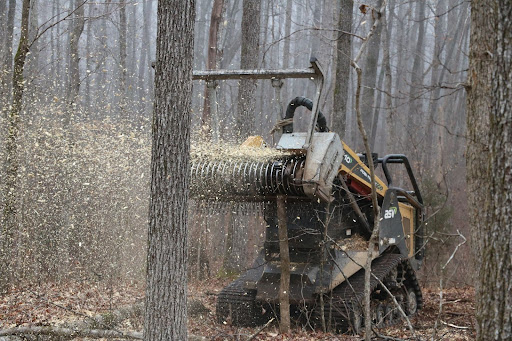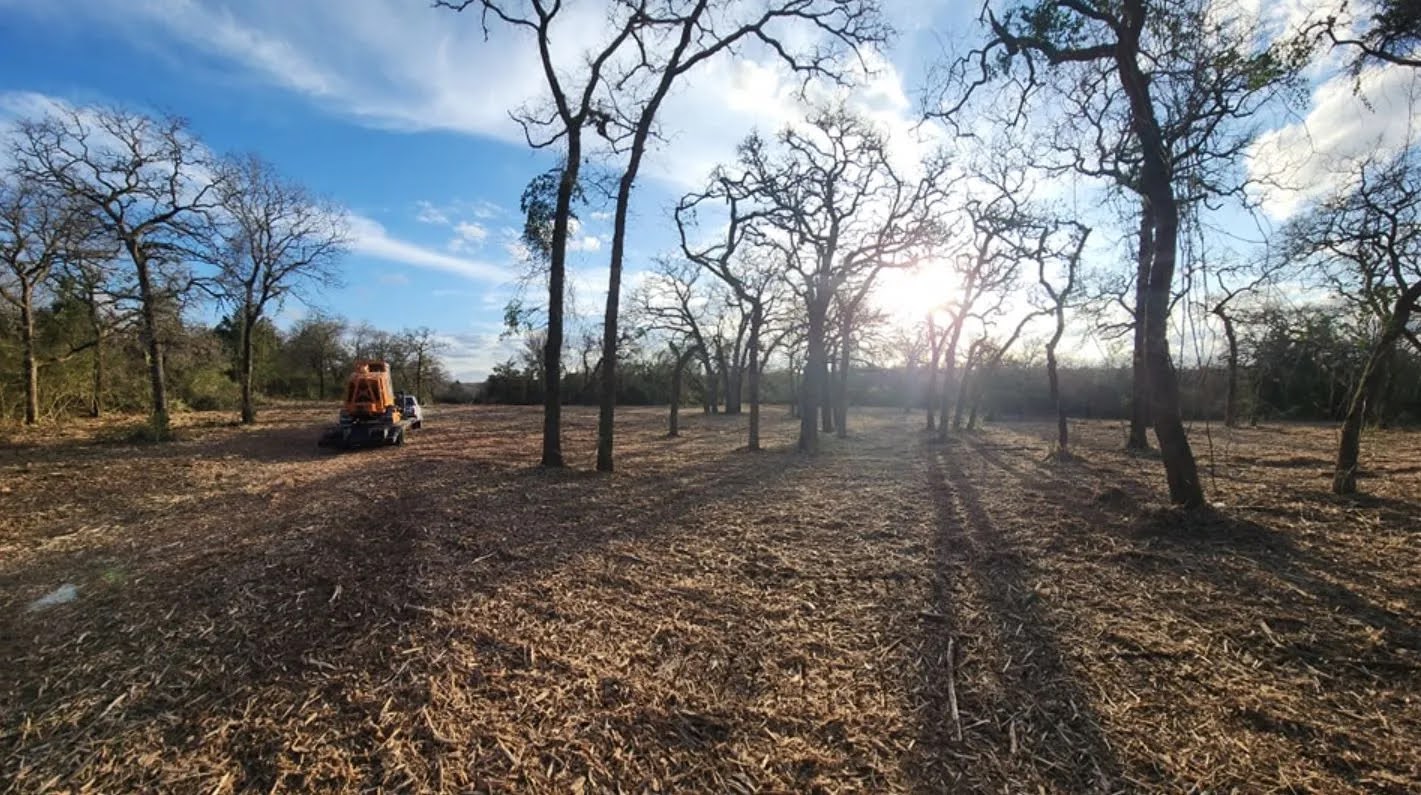Texas Clearing - Your Land Clearing Services Partner
Land clearing is a critical process in preparing a plot of land for various uses, whether it’s for construction, agriculture, or property development. It involves removing trees, stumps, brush, and other obstacles to create a clean, usable space. Texas Clearing understands the complexities and requirements of this task, ensuring that it’s done efficiently and responsibly.
You should read this article because it expertly demystifies the complexities of land clearing, offering practical insights and solutions for your property development needs.

I’ll answer the following questions:
- What is land clearing?
- Why is land clearing necessary?
- How long does it take to clear an acre of land?
- What is the cheapest way to clear land?
- Should I hire a contractor to clear land?
- Are there any environmental concerns with clearing land?
- When is the best time to clear land?
- How many acres of land can professionals clear in one day?
Let’s dive into the nitty-gritty of tree removal, so you know exactly what you’re getting into.
What Is Land Clearing?
Land clearing encompasses the removal of trees, stumps, brush, and other natural obstacles from a piece of land to make it suitable for various purposes like farming, construction, or development. This process, often undertaken by professional land clearing companies, transforms forested or overgrown vegetation into a blank slate. The type of land clearing required can vary significantly based on the land’s intended use, whether it’s for arable land, land for construction, or simply creating a more manageable piece of property. The process not only involves the physical removal of trees and brush but also considers the preservation of native vegetation and maintaining soil quality, ensuring the land remains healthy and sustainable for future use.

Definition of Land Clearing
Land clearing is the process of removing obstacles such as trees, stumps, brush, and rocks from a piece of land. This process is essential for making land suitable for farming, construction, or other types of development. It’s not just about removing vegetation; it also involves soil preparation and ensuring the land is level and stable for future use.
Benefits of Land Clearing
Clearing land can significantly improve the usability of a property. It helps in reducing the risk of fire, managing pest populations, and increasing the value of the land. For agricultural purposes, it allows for better soil health and crop growth. In construction, it provides a stable foundation for building. Properly cleared land also minimizes environmental impacts, such as soil erosion and the spread of invasive species.

Plot of Land Considerations
When considering a land clearing project, several factors come into play. The size and type of property, from small wooded properties to large expanses of land for farming, dictate the approach and tools needed. Property sizes, land slope, and the density of vegetation are crucial factors. Land clearing costs can vary widely, often calculated per acre or linear foot, and depend on the complexity of the project. It’s essential to obtain a detailed cost estimate from a reputable land-clearing contractor, considering factors like the presence of large trees or excess vegetation, and whether the land will be used for planting, construction, or another purpose.
Additionally, understanding local regulations and obtaining a land clearing permit are critical steps in the planning process.
Average Cost and Size of a Plot of Land
The cost of land clearing varies widely based on the size of the plot and the density of vegetation. On average, clearing a dense patch of wooded land can be more costly than a field with sparse vegetation. The price is usually calculated per acre or square foot, and it’s crucial to get an accurate estimate before starting the project.
Property Lines and Underground Utilities
Before any land-clearing project, it’s essential to identify property lines and the location of underground utilities. This step prevents potential legal issues and damage to utility lines, which can be costly and dangerous. A land surveyor can help in accurately marking property boundaries.
Soil Type and Topography
The type of soil and the topography of the land play significant roles in the land-clearing process. Rocky soil, steep slopes, and uneven terrain can pose challenges and may require specialized equipment. Understanding these factors helps in choosing the correct method and tools for clearing.
Types of Vegetation Present
Different types of vegetation require different removal techniques. Dense vegetation, stubborn vegetation, and large trees might need heavy machinery, while lighter brush can be cleared with smaller equipment. The type of vegetation also affects the time and cost of the project.
Tree trimming is also a crucial practice. It’s not just about removing unwanted trees; it’s about strategically shaping the landscape to promote healthy growth and prevent potential hazards. Tree trimming can be particularly important in areas where large, mature trees are present but need to be preserved for aesthetic or environmental reasons. This process requires a delicate balance between removal and conservation, ensuring the land’s integrity while preparing it for its intended use. For professional tree trimming services that understand this balance, Texas Clearing’s tree trimming services offer the expertise needed to manage your land’s vegetation effectively.
Density of Vegetation
The density of trees and brush on the land impacts both the method of land clearing and the time it takes to complete the project. Dense patches of forest require more extensive processes than areas with sparse vegetation.
Tools for Land Clearing Projects
The tools and equipment used in land clearing projects vary based on the size and nature of the land. For larger projects, heavy machinery like backhoe loaders, forest machines, and land excavators are commonly used. These machines can handle dense patches of vegetation and are effective in clearing large areas efficiently. For smaller or more delicate projects, where preserving roots intact or maintaining ground cover is essential, hand tools and smaller, rental equipment might be more suitable. Land clearing attachments for machinery, such as grubbers for root removal or brush levelers, are also important for ensuring the job is done effectively and safely. The choice of equipment often reflects the style of land clearing chosen, whether it’s for a construction project, creating arable land, or clearing a patch of land for aesthetic purposes.

Heavy Equipment Needed for the Project
For larger projects, heavy equipment like compact track loaders, skid steer loaders, and articulated trucks are essential. These machines can handle rugged terrain and dense vegetation, making the clearing process more efficient.
When tackling large-scale land clearing projects, the need for comprehensive tree cutting services becomes apparent. This is particularly true in areas with dense forestation or large, obstructive trees. The use of heavy machinery is often required to efficiently handle such demanding tasks. However, it’s not just about having the right equipment; it’s about having the expertise to use it effectively. Proper tree cutting ensures the land is cleared safely and prepared for its next phase, whether for construction or agricultural development. For those in need of such services, Texas Clearing’s tree cutting services provide the necessary expertise and equipment to get the job done right.
Stump Grinder and Stump Removal
After tree removal, stump grinders are used to remove the remaining tree stumps. This step is crucial to prevent trip hazards and make the land suitable for its intended use. Stump removal can be a separate service, depending on the land-clearing company.
Rock Removal Equipment
Rock removal is another critical aspect of land clearing, especially in areas with a lot of stones or boulders. Equipment like rock pickers and heavy-duty rakes are used to clear the land of these obstacles.
Debris Removal Devices
Once the trees, stumps, and rocks are cleared, the next step is debris removal. This can involve a combination of machines and manual labor, depending on the amount and type of debris. Proper disposal of this material is essential for environmental protection.
Processes Involved in Land-Clearing Projects
The actual land clearing process involves several steps, beginning with a thorough assessment of the land. This includes determining utility locations, ensuring accurate property boundaries, and assessing the soil quality. Land-clearing activities often start with the removal of larger obstacles like trees and boulders, followed by brush removal and dealing with overgrown vegetation. Depending on the project’s scope, this might involve tree removal services or engaging a junk removal company for debris. The process also includes soil remediation if needed, especially in cases where the land has abnormal salt levels or other issues affecting soil health. Throughout the project, it’s crucial to adhere to safety standards and environmental regulations, often requiring a land-clearing permit. The end goal is to transform the land into a usable space, whether it’s a construction site, a piece of land cleared for farming, or simply creating a more manageable property.
Forest clearing is a specialized aspect of land clearing, involving the transformation of heavily wooded areas into usable land. This process is essential for projects where large tracts of forest need to be converted for agricultural, residential, or commercial development. It requires a comprehensive approach that includes not just the removal of trees, but also the management of underbrush and the preservation of the land’s ecological balance. Forest clearing should be undertaken with care to minimize environmental impact while achieving the project’s goals. For those facing such a challenge, Texas Clearing’s forest clearing services offer the expertise and resources necessary to efficiently convert forested land into a valuable asset.
Preparatory Steps Before Clearing the Property
Before starting the clearing process, it’s important to conduct a thorough assessment of the land. This includes checking for wildlife habitats, assessing the health of crops (if any), and determining the best method for clearing. Planning ahead helps in minimizing the environmental impacts and ensuring the health and safety of workers.

How Land Clearing Fits Into Your Land Improvement Plan
Land clearing is more than just removing trees and brush; it’s about preparing your land for its next chapter. Whether it’s for construction, agriculture, or improving the health and aesthetics of your property, clearing the land is the first step in transforming your vision into reality. With the right approach and expertise, land clearing can significantly enhance the value and functionality of your property.
Get Your Free Quote
Ready to start your land-clearing project? Contact us for a free quote. We’ll provide an accurate estimate based on your specific needs and the characteristics of your land. Our team is equipped with the knowledge, experience, and equipment to handle any land-clearing task, big or small.
FAQ
Land clearing is essential for various reasons, including making land suitable for construction, agriculture, or improving its overall usability and safety.
The time to clear an acre of land can vary greatly depending on the density of vegetation, type of soil, and the equipment used. On average, it can take anywhere from a few hours to several days.
Clearing land by hand involves using tools like saws, axes, and rakes. It’s a labor-intensive process best suited for smaller areas or where heavy machinery can’t be used.
The cheapest way to clear land is often manual labor, but this can be time-consuming and physically demanding. Sometimes, renting equipment for a short period can be more cost-effective.
Hiring a contractor is advisable for most land-clearing projects, especially for larger areas or when specialized equipment is required. Contractors have the experience and resources to complete the job efficiently and safely.
Yes, land clearing can lead to soil erosion, habitat destruction, and the spread of invasive species if not done responsibly. It’s important to follow best practices and local regulations to minimize negative impacts.
